Southern T ides


all about the water



















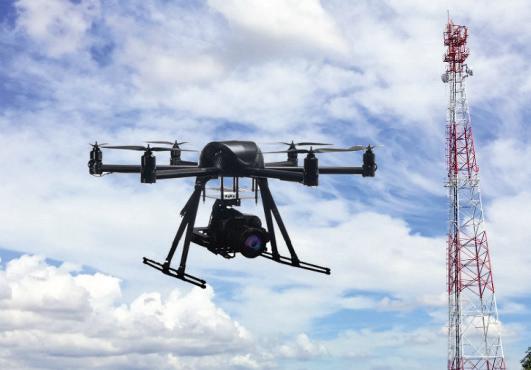

PUBLISHER/EDITOR
Amy Thurman amy@southerntidesmagazine.com
ASSISTANT EDITOR
Neva Parsons neva@southerntidesmagazine.com
CONSULTING NATURALIST
John "Crawfish" Crawford subtropicalnaturalist@gmail.com

THE BITTER END COLUMNIST
Captain J. Gary "Gator" Hill theoriginalcaptaingator@gmail.com
THE RIVERKEEPER REPORT

Meaghan Gerard meaghan@ogeecheeriverkeeper.org
Contributors
Nick Riccio, Jr.
Wildlife Photographer


Jane Wilkinson-Bunch Southern Lovin' in the Oven Recipes
Rich Lavender GADNR Wildlife Resources Division
Ethan Hatchett GADNR Wildlife Resources Division
Mark McKinnon GADNR Law Enforcement Division








The dog days of summer. If you check out Paul Medders’ article on page 15, you’ll learn a bit about what happens in the marsh during this time, between July 3 and August 11, when Sirius, the dog star, is near the sun.
For humans, the heat and humidity we experience during the dog days can overwhelm. Just opening the front door can nearly suck the breath from your lungs some days. With temps in the high 90s and the heat index soaring over 100, it can be hard to be comfortable outdoors. If you work outside, you may not have much choice.
But there’s plenty we can do to make the best of it. Making small adjustments to how you do things can make a big difference in the outcome, whether you’re working or playing in the heat.
Heat stroke and heat exhaustion are very serious illnesses and shouldn’t be taken lightly. Watch yourself and others with you for signs – confusion, dizziness, skin that’s too red or too pale, heavy sweating or not sweating enough, nausea, headache, and fainting are all critical signs. Take frequent breaks when engaging in heavy activity. Don’t push yourself if you start feeling off – listen to your body.
Also understand when to choose water vs. sports drinks. Pre-hydrating with water prior to heavy activity outside is important and if what you’re doing will take less than an hour, sipping water is fine. If what you’re doing will require heavy activity lasting longer than an hour (and/or resulting in heavy sweating), switch to sports drinks, which will help replace the sodium lost from sweating, as well as other nutrients to keep you hydrated. But keep in mind, you CAN overdo it with sports drinks. Also, avoid caffeinated drinks as these can dehydrate you.
Check the UV Index for the day. You’ll notice it’s lower in the early mornings and evenings than during the heat of the day. Don’t assume cloud cover means you’re safe. If you spend a lot of time outside, invest in SPF clothing, but pay attention to wash instructions and replace seasonally. Lighter colors reflect heat, dark colors absorb it. If you tend to forget to reapply sunscreen, set a timer, and don’t forget your scalp, hands and feet. Remember that water magnifies UV rays –including sweat. Our coastal community has lost a lot of people to skin cancer – be smart and don’t make that list. Adjust your schedule. Can you start earlier, stay inside between noon and four? Can you do your outside work in the mornings and do office work in the afternoons? Can you take a break every hour and allow your body 15 minutes to cool off?
Use the right tools for the job. Can you put up an awning? Use floor fans to keep the air circulating? Try picking up a couple cooling neck wraps – I love these things! Frogg
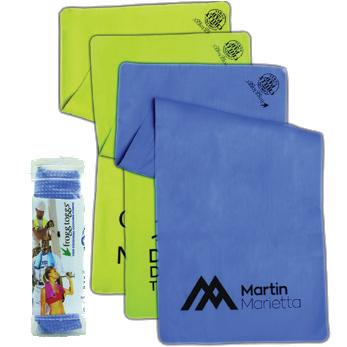
Toggs makes a great one, and they aren’t expensive. Don't forget your eyespolarized and UV protecting sunglasses are a must.
Check the weather frequently. Not only for heat warnings and other alerts, but this time of year pop-up storms are common and if you can hear thunder, you’re in range of lightning. During storms, avoid working near metal objects and water, both of which conduct electricity, avoid anything wired (phones, electronics), plumbing fixtures, even wet dock lines can channel electricity.
Working and playing outside during these dog days of summer is the norm for many of us, but staying alert and making simple changes can make all the difference between a good day and a bad day.
If you’d like heat and storm information sheets to post in your workplace or share with others, shoot me an email. Stay safe!
See you out there!
Amy Thurman Editor in Chief amy@southerntidesmagazine.comCooling towels around your neck, like these (right) by Frogg Toggs, can really help on those hot summer days. Get it wet, then periodically snap it for a fresh cool feeling.
If you work on or near the water, polarizing sunglasses are a must. If you tend to lose sunglasses as often as I do, you can find affordable versions from Hobie, Calcutta, Native Eyewear, and others.
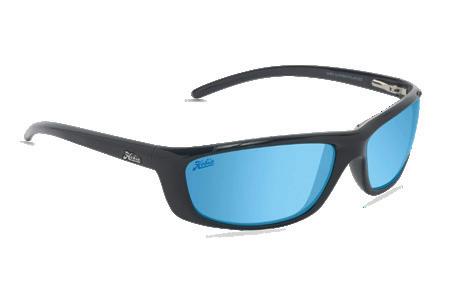






Aliving shoreline was constructed in June to replace 160 feet of a wooden bulkhead at GADNRs Coastal Regional Headquarters (CRH) in Brunswick.
A living shoreline is an erosion control technique that maintains or enhances the natural connectivity and processes between the land-water interface and is constructed using the strategic placement of mostly native materials to protect estuarine shorelines, absorb wave and tidal energy, and enhance coastal habitats.
Although living shorelines are best suited for areas of low to mid energy and may not be best in every situation, there are potential disadvantages of hardened structures, including habitat loss and further erosion on each side of the structure.
The CRH living shoreline has a dual purpose –protecting infrastructure behind the upland and serving as a demonstration site for the continuous education of living shorelines in Georgia.
Although high tides typically touch the new living shoreline, oyster cultch material was not used for this project due to the proximity of the creek.

The living shoreline is 160 linear feet and separated into four, 40-foot sections, where two have a two-tiered design and the other two were graded to a 3:1 slope.
Dividing the shoreline into four sections allows for the demonstration of various methods and materials that can be used to construct a living shoreline. One of the tiered sections and one of the sloped sections use natural coir fiber erosion control mats and straw double layer jute mats where the others have no mats.
To further support sediment and materials on the shoreline, fiber coir logs and Sox were placed at the “toe” of the shoreline, as well as at the bases of the top and middle tiers.
Existing storm drains that run through the shoreline were maintained and supported with rip rap at the inlets and outlets. All four sections include native vegetation; 750 Spartina alterniflora plugs were planted along the intertidal and a variety of approximately 1,500 plants like Muhly grass (Muhlenbergia capillaris), saltmeadow cordgrass (Spartina patens), sea oxeye daisy (Borrichia frutescens) and dune sunflower (Helianthus deblis) were planted behind it.
A stone infiltration trench was constructed along the top of the shoreline to absorb stormwater runoff. Diamondback terrapins have already used the living shoreline for upland access and nesting habitat.
CRD staff will continue to monitor the living shoreline as a part of a coastwide monitoring effort to move living shorelines forward in Georgia.
Zulu Marine Services (a Southern Tides advertiser) completed this project for the DNR.
Living shorelines provide environmentally beneficial methods of stabilizing eroding banks and there are solutions for nearly every bank erosion problem.

A living shoreline repairs eroded creek and riverbanks in a manner that mimics nature and provides long-term resiliency and stability at competitive cost.
Benefits include:
• A natural and stable alternative to rip rap and sea walls.
• Use of natural materials, and materials that mimic nature.
• Encourages oyster growth, which both stabilizes the bank and provides essential habitat for marine species.
• Absorbs wave action, protecting against erosion.
• Native plantings help stabilize the bank, are tolerant of weather conditions, require little maintenance once established, and create a beautiful landscape. The root systems of these plants create a vegetated buffer that absorbs and disperses wave energy, preventing erosion.
• Have shown to be more resilient to storms and age than bulkheads.
• Requires less maintenance than bulkheads or rip rap.
• Do not cause increased erosion on either side as bulkheads. To find out more about having a living shoreline installed on your property, www.zuludiscovery.com/marine/living-shorelines/.


1 pound fresh crab meat (we used blue crab)
3 slices white bread, toasted, crust removed
1 egg, beaten
1 tbsp mayonnaise
1 tsp Dijon mustard
1 tsp Worchestershire sauce
Contributed
These tasty treats are great made with locally caught blue crab. Quick and easy to make, they're perfect for a light summer lunch, an appetizer, or to take along to a party. Don't forget to support your local seafood markets or catch it yourself!
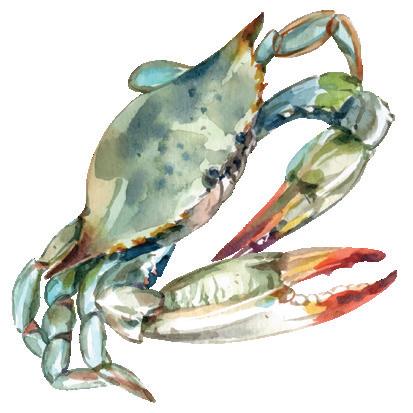

• Put toast through food processor to make bread crumbs, chopped fine.
• In a large bowl, mix together egg, mayo, mustard, Worchestershire sauce, Old Bay and parsley.
• Add bread crumbs and crab meat and mix by hand to avoid breaking up too many of the lumps of crab meat. (Though very large lumps will need to be broken up so the treats will hold together.)
• Shape mixture into 1.25-inch balls.
• Fry in hot oil, in batches, until brown. Drain on a paper towel before serving.
• Great with lemon juice or your favorite sauce. Try remoulade, cocktail sauce or an aoili.
Bald eagle surveys in Georgia revealed the iconic raptors nesting and fledging young at healthy rates this year, including in coastal areas where avian influenza hammered eagles last spring.
Survey leader Dr. Bob Sargent of the Georgia Department of Natural Resources said nesting success was average to aboveaverage in areas surveyed. Sargent, a program manager with DNR’s Wildlife Conservation Section, called the findings “excellent,” especially considering the toll that highly pathogenic avian influenza took nationwide on bald eagles, black vultures and many other bird species last year.
"Last year’s exceptionally poor nesting results on the coast, as well as the lower than usual success rate in southwest Georgia, was worrisome because those areas combine for about 85 percent of our known eagle nests,” he said.
“The comeback of the bald eagle in Georgia is a great conservation success story, but the species is listed as threatened in the state and if high nest failures continued they could chip away at population gains. I’m pleased to see the nest success rates rebound this year.”
Although survey flights this year covered less territory than the once-every-five-years statewide survey in 2022, they still recorded 198 nest territories. Of those, 150 were successful, fledging 232 eagles. Accounting for nests not monitored, the totals suggest Georgia has maintained over 200 nest territories a year since 2015 and the number of eagles nesting has continued to

increase, according to Sargent.
DNR monitors eagle nesting by helicopter twice a year, splitting the state into five sections for surveys. The coast is surveyed annually. The other areas are checked at least every other year. Flights in January and February mark nests in use. Follow-ups in March and April help gauge how the nests fared.
The 2023 survey included southwest Georgia, the coastal counties and barrier islands, the Oconee and Ocmulgee river corridors in north-central Georgia, and a few reservoirs southeast of Atlanta.
Sargent said he sighed in relief when it became clear that nest success rates, especially on the coast, would register within normal ranges. In April 2022, DNR announced that highly pathogenic avian influenza – the viral disease dubbed bird flu – had ravaged bald eagles on the coast, home to about a third of Georgia’s eagle nests. Nest success there dropped about 30 percent last year. Fewer than half of the nests fledged even one eagle.
However, no influenza-positive cases have been reported in bald eagles in Georgia for more than a year, and there have been no cases in other species for about four months, according to Sargent. The virus also caused substantial die offs at black vulture roosts in 2022.
“I did see dead eaglets in two coastal nests in March this year, which is unusual and suggests the virus might still linger in some hotspots, but that’s certainly not a definitive conclusion,” he said. Eaglets die from many causes, including illness, starvation and predation by great horned owls, but predators and scavengers usually remove those carcasses or the eaglets fall out of the nest.
Nest success rates charted in this year’s survey rated from average in southwest Georgia (75 percent) and on the coast (73 percent) to above average (83 percent) in the area bounded by Athens to the northeast, Atlanta to the northwest and Macon to the south.
The 232 eagles fledged, almost 1.6 young per nest, is slightly more than the state’s long-term average. In comparison, last year’s record 229 nest territories fledged 227 eagles from 146 successful nests.
On the coast, the 81 nest territories recorded measured notably higher than average. The total in 2022 was 73 territories. Nesting success this year rated average at 1.5 young per nest. But the 89 eaglets fledged from 59 coastal nests far exceeds the 50 eaglets fledged from only 34 successful nests last year.
The survey also documented 92 nest territories in southwest Georgia, which is comparable to the 96 in 2022. Sixty-nine of this year’s nests fledged young. The better-than-average 1.6 eaglets per nest (113 eaglets fledged) topped the 1.5 eaglets per nest from 62 successful nests in the region in 2022.
“The nest success on the coast and in southwest Georgia are a reminder of the importance of not overreacting to a poor nest success year,” Sargent said. “Severe weather in early to mid-winter, viral outbreaks and other problems that seem like calamities at the time can result in poor reproductive years. But eagles are resilient, and have bounced back from far worse population-level challenges.”
Indeed, the bald eagle has rebounded in Georgia and across the species’ range. Factors feeding that recovery include a U.S. ban on DDT use in 1972, habitat improvements after enactment of the federal Clean Water and Clean Air acts, protection through the Endangered Species Act, increased
public awareness, restoration of local populations through release programs, and forest regrowth.
Following a steep decline in the eagle population in Georgia, the state went from no known successful nests during most of the 1970s to one in 1981, 48 by the turn of the century and more than 200 today.

The public is encouraged to report eagle nests via www. georgiawildlife.com/conservation/eaglenest, (478) 994-1438) or bob.sargent@dnr.ga.gov. Such reports typically lead to the discovery of 10-15 new nests a year. (Tip: Osprey nests are sometimes confused with eagles. Learn more at georgiawildlife. com/bald-eagle.)
DNR works with landowners to help protect bald eagle nests on private property. Although delisted from the Endangered Species Act in 2007, eagles are protected by the Bald and Golden Eagle Protection Act, the Migratory Bird Treaty Act, and state law. In Georgia, the species is classified as threatened.
The surveys of these birds are part of DNR Wildlife Conservation Section’s mission to conserve nongame wildlife – native animals not legally hunted or fished for – and native plants and natural habitats.
The conservation of bald eagles is supported in part by people who buy an eagle or monarch license plate or renew these or the older hummingbird designs. The tags cost only $25 more than a standard license plate and $19 of each purchase and $20 of each annual renewal goes to help conserve eagles and hundreds of other Georgia plant and animal species listed as species of conservation concern.
Eagle in flight (opposite page) and a mated pair (above) both photographed on Jekyll Island.











We're pleased to reprint this article, an installment from the ongoing Seasons of the Saltmarsh series from the GADNR Coastal Resources Division's quarterly magazine Coastlines. Reprinted with permission.
Throughout time, cultures around the world have told stories to remind us how to treat each other, to tell us about past events, and even to educate us about the natural world. Words and pictures have been used to remind future generations why they should care enough to turn the stories into actions.
This episode of the story is all about summer in the Georgia saltmarsh. The saltmarsh is one of the dominant landscape features of the coastal zone of Georgia. The 368,000 acres of saltmarsh are bordered on the east by the barrier islands and Atlantic Ocean. The western border is commonly an expansive freshwater swamp or one of the five inland rivers bringing required fresh water to the estuary. The open sounds or bays is where freshwater and saltwater mix forming coastal estuaries.

This time of year is jam packed with celestial events that we distill down, misunderstand or take for granted. The dominant driver of the saltmarsh is the ever-present ebb and flow of the tides. These tides would not exist if it were not for the push and the pull of the celestial bodies and precise location of the moon and the sun.
We just passed what we call the first day of summer. In coastal Georgia some years it feels like the first day of summer can come in early April. That first day of summer (June 21) indicates more than just the longest day of the year in the northern hemisphere, but it is a time when the Earth’s poles have the maximum tilt towards the sun. This maximum tilt towards the sun means not only long days with daylight well towards 9 p.m., but it also means our warmest of days.
Just after the summer solstice, we move right into what we call the “dog days” of summer. Many people in the south believe that the dog days of summer describe a time when even your old coon dog won’t come out from under the shade of the front porch because it is so hot outside. Although a coon dog splayed out on the porch seems quintessentially southern, the truth is “the dog days of summer” has a celestial origin too. The dog days of summer are actually from July 3 to August 11 every year, and it has to do with the time of year when Sirius the “Dog Star” of the constellation Canis Major occupies the same region of the sky with the sun.
These extremely warm days have the saltmarsh maximizing productivity. From primary productivity of green plant growth to the warm waters of the estuary being a perfect home for phytoplankton like dinoflagellates to thrive, summer is a very active time. The saltmarsh is often talked about as being a nursery for many commercially and
By Paul Medders Marine Biologist GADNR Coastal Resources Divisionrecreationally important species. Many of these species are cold blooded animals and experience their fastest growth rates during these extreme warm months.
Keep in mind though that warmer is not always better. One of the main concerns when coastal water temperatures rise is the decrease in oxygen. Warmer water holds less oxygen needed by fish and crustaceans. Oxygen levels can bounce around changing very rapidly making the saltmarsh the harshest of environments from time to time.
One of the purposes of this series is to encourage the reader to slow down and take a walk by the saltmarsh and look for small changes that are often missed in our fastpaced digital world. So what do you see? If we start by the creek bank you will see smooth cordgrass, Spartina alternaflora, in all of its glory. By the creek bank, at the lowest elevation, you will see smooth cordgrass represented in its tall form. You will notice the emerald green color and the long stems with alternating (hence alternaflora) long leaves reaching for the sun.
These long stems of the tall form of smooth cordgrass is what remains after the dying of winter. These long stems of last year’s tall smooth cordgrass often form dense mats of what is commonly referred to as marsh wrack. Marsh wrack that ends up on the beach can collect enough wind driven sand to cause dune formation.
As you move up the marsh in elevation you will see the medium and short forms of smooth cordgrass that do not grow as tall because of the elevation change of the marsh soils below. Looking over the marsh while riding up U.S. Hwy. 17, it all looks like it grows to the same height and it does because of the twice daily inundation of saltwater. The varying heights of the plant is dictated by the elevation below.
The last notable thing about the saltmarsh overall this time of year is the color. With the first breath of spring the saltmarsh was still wearing its winter brown. As the weather warmed the base of the smooth cordgrass starts to show signs of green representing rebirth. By mid-May, of most years, and into June the saltmarsh is as green as Catherine the Great’s famous emerald necklace. Now if you look closely at the saltmarsh you will see hues of green with patches of yellow-golds and orangey-browns. The greens are still there but it is almost as if the saltmarsh is telling us to enjoy the dog days of summer with a foreshadowing of the impending fall and the bleakness of winter.
As always, we encourage you to get out there and enjoy our unique coastal environment. Have experiences, make memories and tell stories.


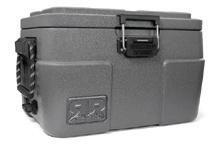
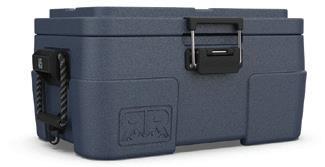






















Join St. Marys Riverkeeper on August 19 to remove unwanted litter from waterways and tributaries. Help clean up Stokes Road in Charlton County which has become a dumping ground for tires and other debris. This will be a HOT day with the possibility of bugs. Please dress appropriately and be sure to bring extra water.

www.stmarysriverkeeper.org/event/cleanup-on-stokes-road/
Join ORK and Blair Holloway, Lead Meteorologist at National Weather Service (NWS), for happy hour on August 12. He will lead an informal presentation and chat about weather and its effects on our environment. Blair will also cover information regarding how flood stages are set for gauges, how forecasts are generated for select gauge locations, and other resources available. Enjoy some drinks, snacks, and fellowship with ORK members and Blair!
This is a members-only event.
Become an ORK member now. www.ogeecheeriverkeeper.org/
 Compiled by Meaghan Gerard Communications & Administrative Director Ogeechee Riverkeeper meaghan@ogeecheeriverkeeper.org
Compiled by Meaghan Gerard Communications & Administrative Director Ogeechee Riverkeeper meaghan@ogeecheeriverkeeper.org
Sediment runoff is the top cause of nonpoint source water pollution in Georgia waters. Sedimentation can cause harm to aquatic life in a variety of ways, including by reducing dissolved oxygen levels and increasing turbidity, which blocks sunlight. Altamaha Riverkeeper has been busy working to stop illegal land clearing that is muddying our waters. Several construction projects in the Altamaha basin have cleared land without first acquiring the required permits and without installing required Best Management Practices (BMPs) for erosion and sedimentation control. You can help stop sediment pollution in your area by using the Get the Dirt Out tool-kit created by Chattahoochee Riverkeeper, chattahoochee.org/gtdo/, and by becoming a volunteer water quality monitor. For more information contact Maggie with Altamaha Riverkeeper: maggie@ altamahariverkeeper.org or 912-223-6073.
www.facebook.com/AltamahaRiverkeeper


Diamondback terrapins are nesting which can mean they'll cross roads. Watch out for them while driving!

While nesting sea turtles are making headlines, nesting diamondback terrapins are lighting up road signs.
The nesting season for loggerhead sea turtles in Georgia began May 1, with the first nest found on Blackbeard Island National Wildlife Refuge.
The same day near Tybee Island, two message boards along the Tybee causeway (U.S. 80) started flashing warnings for drivers to keep an eye out for diamondback terrapins crossing the busy highway.

From May until mid-July, for up to two hours before and after daily high tides these saltmarsh turtles with the lipstick mouths crawl for higher ground to lay their eggs. The roadsides of U.S. 80, which bisects marsh between the Bull River and the Savannah River’s South Channel, are a magnet for adult females.
The Georgia Department of Transportation runs alternating messages on the causeway during the nesting period, with timing synced to a tide gauge at nearby Fort Pulaski National Monument. DOT Ecology Section manager Chris Goodson said one script tells drivers to watch for turtles. The other cautions against following too close.
“The first is awareness about possible wildlife on the roadway,” Goodson said. “The second, typically it’s not the car out in front (that hits the terrapin), but the one following too closely behind. The second message is really about if you provide space, you’re more likely to avoid it.”
DNR Sea Turtle Program Coordinator Mark Dodd said the use of flashing turtle-crossing signs along the Jekyll Island Causeway, another diamondback terrapin nesting hotspot, contributed to significantly fewer road-killed terps. “A scientific study showed that it really does reduce mortality.”

The hope is the Tybee signs – along other efforts at Jekyll and elsewhere – continue to help drivers steer clear of these declining turtles, a high-priority species in Georgia’s State Wildlife Action Plan.
Diamondback terrapins can look more monochrome when dry, which can make them blend into the background. Watch carefully while driving!
Photos by Amy Thurman
The Georgia General Assembly recently passed House Bill 121, bringing about changes in the regulations governing wakeboarding and wakesurfing activities on state waters. The new legislation aims to enhance safety measures, promote responsible water sports, and ensure a balance between recreation and public and private property preservation.
“We thank our state legislators for their commitment to water safety,” said Col. Thomas Barnard, director of Georgia DNR’s Law Enforcement Division. “We certainly support any legislation that will decrease the number of water deaths and injuries on our waterways.”
Under House Bill 121, the following key provisions went into effect on July 1, 2023:
Distance Restrictions: The bill includes distance restrictions for wakeboarding and wakesurfing. The legislation states that “no person shall engage in wakesurfing or wakeboarding upon waters of this state within 200 feet of any moored vessel; any wharf, dock, pier, piling, or bridge structure or abutment; or any shoreline adjacent to a full-time or part-time residence, public park, public beach, public swimming area, marina, restaurant, or other public use area.” These measures are designed to ensure the safety of participants and prevent potential conflicts with other water users.
Mandatory Personal Flotation Devices (PFDs): The bill mandates that all wakeboarders and wakesurfers must wear a U.S. Coast Guard-approved life jacket at all times while participating in these activities.

No wakeboarding or wakesurfing between sunset and sunrise.
The bill does not apply to a regatta, boat race, marine parade, tournament, or exhibition for which the commissioner has granted a marine event permit. It also does not apply on
Intracoastal waterways, rivers, or private lakes.
There are two important points to note:
HB 121 does not change the 100-foot law, which applies to all vessels.
It also has no effect on No Wake Zones, which require all vessels to slow to idle speed while traversing them.
Game Wardens will begin enforcement of the law in July, with an emphasis on educating boaters in what it includes, however, repeat offenders or those engaging in blatant and reckless disregard for the law, will be dealt with accordingly.
“We want everyone to enjoy their time on the water. We just want them to do it in a safe manner that is respectful of other water users and nearby property owners,” said Col. Barnard.
New wakeboarding legislation went into effect on July 1. Stock photo


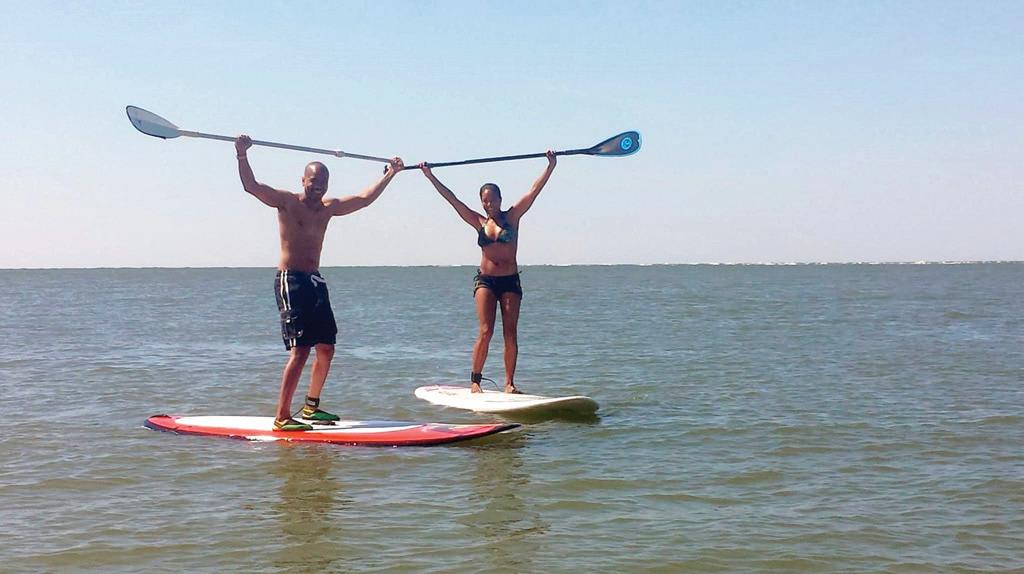




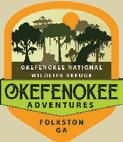






When late spring melts into summer, humid evenings host more insects than just mosquitos. At dusk, the yellow flashes of fireflies appear in the haze of suburban yards and forest edges across Georgia, delighting children and adults.
Fireflies, or lightning bugs, are beetles adapted to be bioluminescent. But the light they emit from their abdomen is more than ornamental: It serves a variety of purposes. From the time a firefly egg is laid, light plays an important role in the insect’s life. Firefly eggs, larvae and pupa glow as a strategy to deter predators, while adults use bioluminescence to attract mates.
The species most often encountered is the big dipper firefly, but Georgia is home to at least 40 species of fireflies. Some flash in sync, others glow continuously and some even create spectacular shows with intermittent flashes and rings of light.
Loopy 5s
In 2021, one of these latter lightning bugs was discovered on private property in Walton County by Allen Grubbs, a enthusiastic citizen scientist. This rare lightning bug was the loopy 5 firefly (Photuris forresti). The loopy 5 inhabits marshy, cattail-ridden wetlands and is identified by its distinctive flashing pattern. The firefly glows, spins and descends slowly like a falling feather. The light intervals are sporadic, with the displays generally lasting for 90 minutes after sunset.

Loopy 5s are not widespread: They are found only in small pockets in South Carolina, Tennessee and Georgia. Georgia has more than one place where the species has been seen, with sites including at Hard Labor Creek State Park near Rutledge. The loopy 5 appears to have strict habitat requirements that limit its spread and abundance. (Note: Hard Labor is holding four firefly walks this month. These outings focus on fireflies in general and the loopy 5 does not regularly display after early June.)
Pesticides, urbanization, invasive plants and artificial light threaten this species and its habitat. All have led to a petition to list the loopy 5 firefly under the Endangered Species Act.

Firefly Atlas
While Georgia is a hotspot for firefly diversity, there is still a lot to learn about these insects. There are gaps in data about the ranges, preferred habitats and the effects of light pollution on each species. The Firefly Atlas was created to gather data and fill those gaps. Visit www.fireflyatlas.org/.
Open to everyone from scientists to the public, the initiative encourages people to submit firefly sightings to the database. Users can also view information about fireflies in their area.
You can also help fireflies by providing habitat that attracts them. Requirements include:
Healthy soil: Fireflies spend most of their time in the soil as larvae, so healthy soil rich with vegetation and leaf litter is essential for their success.
Moisture: Ponds, rain gardens and rotting logs attract fireflies, providing a place for them to meet and mate.
Avoiding pesticides: Insecticides, grub killers and even some fertilizers can kill fireflies and their larvae.
Minimizing outdoor lighting: Light pollution discourages fireflies from congregating in an area. Consider angling your outdoor lights toward the ground or turning them off completely. Other measures include timers, shielding, motion detectors and restricting light to where it is needed, such as paths and doorways.
In fireflies, we have a world of light that is often overlooked, the beauty of which most have only glimpsed the faintest glow. This world, first experienced by many of us in jars, bug catchers and even our hands, has the potential to take hold of our curiosity again and reintroduce us to the magic of the outdoors.
This Loopy 5 firefly has been found in Walton County and makes its home in marshy wetlands. Photo by Richard Joyce, Xerces This common Eastern firefly, also known as the big dipper firely, is what we see most often on the coast.
Captain Gator is working all the hours God gives doing dolphin and eco tours, so we're running a reprint from the summer of 2018. Unfortunately, cold water temps and other factors this winter and spring led to similar issues now, in 2023, which is most likely a contributing factor to commercial shrimp season not opening until June 20, rather than in May.
Once again I’m late on deadline, but my name’s still at the top of the page so she hasn’t given up on me yet. So, without further ado, this month’s installment of “Where is he going with this?” is now in session.
Our journey starts months ago, when the jaws of winter were clamped down tightly on much of the country. As the new year slid in, the temperatures slid down, and down and down. Not only temps on land, but water temperatures, too.
It wasn’t long before water temps were down 12 to 15 degrees and kept falling. Normal winter water temps in the 60s were racing at break-neck speed to the low 50s, then fell further, into the mid- to low 40s. With these sudden drops, people who spend time on the water started seeing dead bait fish, then dead sea trout on the water surface. Most aquatic animals can handle temperature shifts, but only when given time to acclimate or move. Sadly, sea trout are very temperature-sensitive and their population suffered greatly. Even our hardier reds (red drum, spottail bass), took a hit due to the abnormally cold water. [Editor's note: I'm not sure if there were fish kills this winter/ spring due to cold temps.]
Also impacted were the primary food source that these fish, and many other local species, subsist on: the lowly shrimp. Which brings us to the trickle-down effect. Shrimp don’t do well in cold water at all. They'll normally migrate to warmer water when water temperatures drop but this year the sudden cold caught them unaware and before the little guys could get gone it was too late. Not all died, mind you, some buried themselves in the mud, but huge numbers of the shrimp population didn’t survive the cold and we’re seeing the effects of that now.
How many of you have noticed the lack of shrimp boats operating? By May we usually see shrimp boats dragging the Savannah River entrance, like a taco truck riding through the neighborhood with his bell ringing. But not this year. Why is that? Because there’s nothing to fish for, or at least nothing to speak of. By this time of year most of the fishing fleets are working, and white shrimp should be coming in nicely but that just isn’t the case.
Restaurants that depend on fresh wild shrimp are feeling the trickle-down, charter fishermen are feeling it, as are bait houses and seafood markets – anyone or anything that relies on local shrimp for revenue. Even local crabbers had smaller catches this year.

Dolphin tour and eco tour companies are feeling the effects as well. But let’s not forget about those who rely on wild shrimp as their primary food source – our local dolphin population. The spring shrimp season is important to our flippered friends,
in particular the females who are calving. A double whammy hit them this year. In the cold winter months they have to rely on the blubber they’ve laid up. When they start giving birth, mothers use this stored fat to produce milk, which leads to weight loss. Females during this time of year are normally feeding heavily, often at shrimp boats that are discarding by-catch, which is a seafood buffet for dolphins, as well as for sharks that have come in to have their pups. But the shrimp boats aren’t running and there are very few wild shrimp to be found in their usual feeding grounds either.
Being on the water every day while operating a dolphin tour boat on Tybee Island, I’ve spent a lot of time observing dolphin behavior and have seen a marked difference in their patterns. They’re having to work harder for their food, which leaves less time for them to play and socialize. I have repeat guests onboard each year and even they’ve noticed the difference. The dolphins are warier and have become more standoffish, even displaying annoyance if boats stray to close while they’re hunting. I share their domain so I try and respect them and give them the space they need to fish.
I encourage all of you to do the same. Be aware of this while out sharing the water with our dolphins and try not to press them while trying to get those views this summer. Not only is it illegal and will result in steep fines, but it's harmful, even dangerous for the dolphins.
'Til our wakes cross again, peace and love, and shrimp and grits. I'll see you on the water!
Captain Gator has spent the past several decades truly living the salt life, from living on and racing sailboats, to being a paddle guide, to becoming a 100-ton master and working in the tour boat industry. A strong love of history and the water has shaped him into becoming one part educator, one part entertainer, and one part storyteller. When asked if he is a native, his reply is yes, by osmosis. TheOriginalCaptainGator@gmail.com













